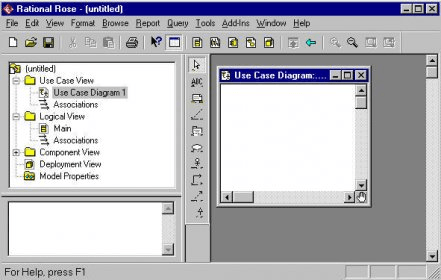

For more modern architectures Rational Software Architect and Rational Software Modeler were developed. The Rational Rose family allows integration with legacy integrated development environments or languages. A 2007 book noted that other UML tools are also capable of this, the list including Borland Together, ESS-Model, BlueJ, and Fujaba. Rational Rose could also do source-based reverse engineering the combination of this capability with source generation from diagrams was dubbed roundtrip engineering. It simplifies the complex process of software design, creating a "blueprint" for construction of software systems. The Unified Modeling Language (UML) is the industry-standard language for specifying, visualizing, constructing, and documenting the artifacts of software systems. The Rational Rose family of products is a set of UML modeling tools for software design. With the Rational June 2006 Product Release, IBM withdrew the “XDE” family of products and introduced the Rational Rose family of products as replacements.

The Rational Software division of IBM, which previously produced Rational Rose, wrote this software. Provides web publishing models and reports to improve communication across the extended team.Rational Rose XDE, an "eXtended Development Environment" for software developers, integrates with Microsoft Visual Studio. Integrates with other IBM Rational® lifecycle development tools and with any SCC-compliant version control system, including IBM Rational ClearCase®. Integrate application design with developmentĪllows one language to be used for the analysis and development lifecycle. Supports analysis patterns based on reusable object-oriented software.Įnables granular management and use of models through a model components feature that can be controlled separately. Provides a common, visual modeling language and environment for faster creation of software.


Rational Rose documents the diagram as it is being constructed and then generates code in the designer's choice of C++, Visual Basic, Java, Oracle8, Corba or Data Definition Language. In much the same way a theatrical director blocks out a play, a software designer uses Rational Rose to visually create (model) the framework for an application by blocking out classes with actors (stick figures), use case elements (ovals), objects (rectangles) and messages/relationships (arrows) in a sequence diagram using drag-and-drop symbols.


 0 kommentar(er)
0 kommentar(er)
